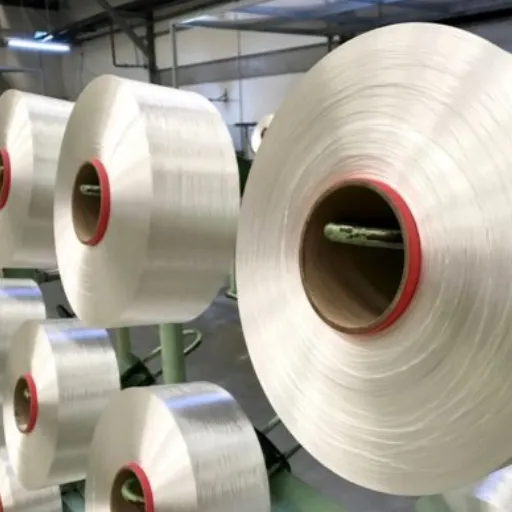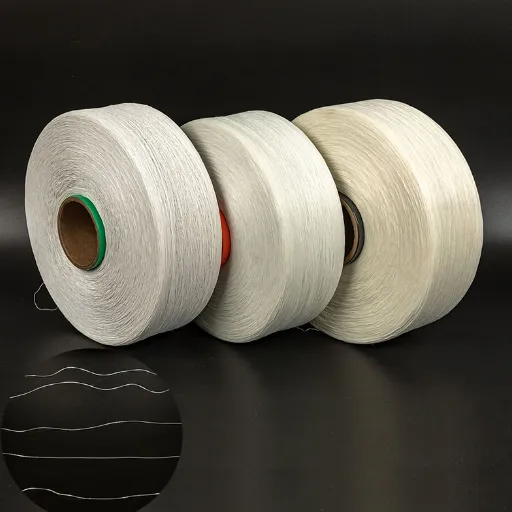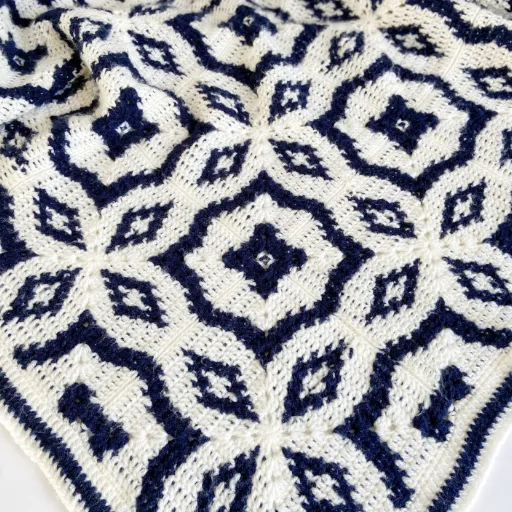Choosing the right yarn for your project can be a bit of a challenge due to the vast array of choices. Two of the most common synthetic fibers among them are acrylic and polyester, which are very flexible and thus have excellent acceptance among crafters. But which one is suitable for you? In this blog article, we will discuss the comparisons between acrylic and polyester, including their specific traits, advantages, and ideal uses. This guide is helpful for everyone, whether you have moved on to the next project or you are just learning the basics. So stay with us as we open up the differences and bring forward the clarity regarding this crafting dilemma!
Overview of Acrylic and Polyester
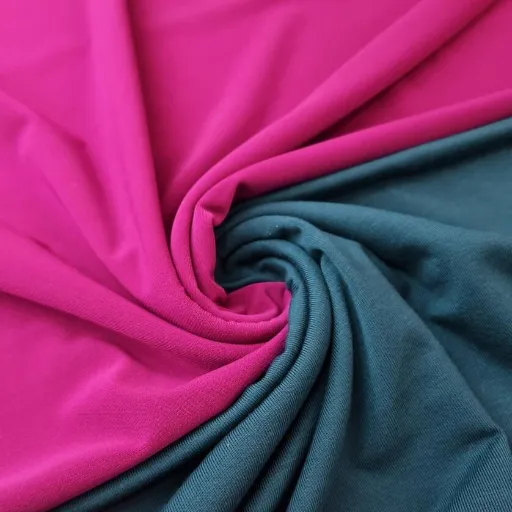
Acrylic and polyester are both synthetic fibers widely used in crafting and textiles; however, they differ in texture, durability, and ideal applications. Acrylic yarn is soft, light, and warm; thus, it is an excellent choice for making things like scarves, blankets, and hats. It is also usually cheaper and easier to take care of, since it can be washed in the machine. On the other hand, polyester fibers are tough and multiply their resistance to water, making them ideal for outdoor applications or items that need to be strong, such as bags and furniture. Although these two fibers are both versatile and easily accessible, the final decision between them still depends on the project’s requirements and the quality of the finished item you expect.
Definition and Origins of Acrylic and Polyester
🧶 Acrylic
Acrylic is a human-made fiber that comes from the polymer polyacrylonitrile. Its history goes back to the 1940s, when chemists first created it to produce a fabric with properties similar to those of wool but lighter and warmer. Acrylic was mainly getting the attention due to its low price and maintenance-free nature. It is a go-to fiber when it comes to textiles like sweaters, blankets, and socks.
🧵 Polyester
Another synthetic fiber, polyester, is produced through a chemical reaction involving petroleum, air, and water to create polyethylene terephthalate (PET). Polyester, developed in the early 1940s, became a giant in the textile field by the mid-20th century due to its strong, non-wrinkling, and versatile properties. Now, polyester can be seen in people’s outfits and home furnishings, as well as in ropes and containers used in industrial processes. Both substances are universally acknowledged for their creativity and impact on the modern textile market.
Production Process of Acrylic Yarn and Polyester Yarn
The whole process of making acrylic yarn starts with acrylonitrile’s polymerization. This is a chemical derived from petroleum. The monomer is mixed with some other chemicals to create a polymer solution, which is then spun into fibers through either wet or dry spinning methods. In wet spinning, the polymer solution is dipped into a coagulation bath, whereas in dry spinning, hot air is blown to solidify the fibers. The fibers are then stretched, washed, and crimped to make them stronger and more textured before they are either cut into staple lengths or packed as continuous filaments.
On the other hand, polyester yarn production kicks off with the polymerization of PTA and MEG, which are purified terephthalic acid and monoethylene glycol, respectively, and they combine to create PET. The molten polymer obtained from this process is then forced through spinnerets to obtain filament fibers. These fibers are then cooled, pulled, or drawn to get the desired alignment of the molecular structure, and heat-set to raise their hardness and tensile strength. The fibers may be textured, dyed, or mixed with other materials, depending on the end-use, to get different characteristics before being packaged as spools for industrial or commercial use. Both these manufacturing processes exhibit the incredible versatility of synthetic fibers in meeting the requirements of various textiles and applications.
Comparison of Properties
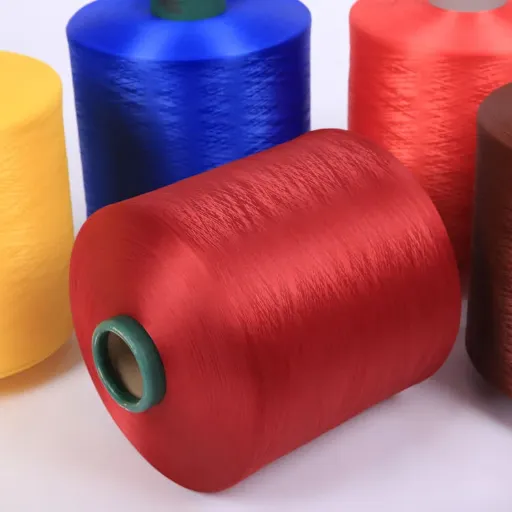
Polyester and acrylic fibers are unique in their respective properties, which is why the world uses them differently.
| Property | Description |
|---|---|
| Durability | Among all the fibers, polyester is the strongest, as it endures stretching, shrinking, and abrasion very well. Comparatively, acrylic loses its quality faster, as it gets pilled and wears out quicker due to its nature. |
| Softness | In general, acrylic is the softest of the fiber family and frequently takes the place of wool because of its pleasant feel; on the other hand, polyester gives a smooth and less soft ambiance. |
| Moisture Resistance | Low moisture absorption is a characteristic of polyester, making it ideal for quick-drying applications. Acrylic is also moisture-resistant, but it doesn’t dry as quickly as polyester. |
| Heat Retention | The thermal insulation of acrylic is excellent, providing more warmth, which is one reason it is used in winter clothing. Polyester, being versatile, is still unable to retain heat. |
| Care and Maintenance | Both fibers are generally low maintenance; however, polyester has the upper hand because it does not wrinkle and stain as easily as acrylic. |
Durability: Acrylic vs Polyester
When the properties of durability are compared, acrylic is overshadowed by polyester due to its stronger fibers and higher ability to withstand wear and tear. It is hard to imagine that, for example, polyester would be a better choice than acrylic. Still, it would be for items such as activewear and upholstery that undergo frequent washing and use. Acrylic is often considered a durable option, but its susceptibility to abrasion conditions constantly wears down its surface, making it appear invisible. Furthermore, polyester is better equipped than acrylic to withstand harsh conditions such as UV exposure unscathed, allowing it to retain the sun’s strength and color even in outdoor applications. Therefore, for people who are looking for a fabric that lasts forever, polyester is no doubt the winner.
Moisture Resistance in Acrylic and Polyester
Acrylic and polyester both have good moisture resistance, but they have different properties. Polyester is naturally water-repellent, so it dries fast and is very suitable for outdoor gear, activewear, and swimwear. The water-repellent nature of the fibers helps to maintain comfort and durability in wet conditions. In contrast, acrylic is a little slower drying than polyester when moisture-wicking, but it can still absorb a bit of water. However, it is still a much faster dryer compared to natural fibers. Both materials can be used in wet areas, but polyester’s high moisture resistance makes it the most suitable for applications with continual contact with water or humidity.
Applications and Uses
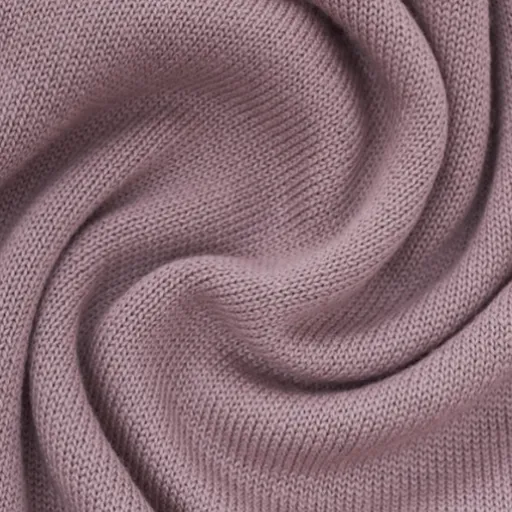
Polyester has become the fabric of choice for outdoor wear, activewear, and equipment because it resists moisture and dries quickly, making it the perfect solution for active and humid environments. Acrylic, on the other hand, is primarily used in the production of sweaters, blankets, and other warm clothes because it has excellent insulating properties. Both fibers are used in furniture and home decor. Polyester is the first choice for rooms likely to get stained or wet, while the softness and comfort of acrylic make it the main option in such areas.
Home Decor: Acrylic and Polyester in Furnishings
The choice between acrylic and polyester for home furnishings depends on personal preferences and the specific fabric’s environment. Acrylic is notorious for its gentle texture and wool-like quality, making it a common choice for the plushest throws, cushions, and upholstery in comfort-oriented living rooms. However, polyester is an excellent choice for high-usage areas or the homes of children and pets, as it offers outstanding resistance to stains and moisture, along with durability. Also, obtaining a near-surface view of current trends via search data reveals that consumers consistently seek fabrics that blend practicality with beauty, thus trending towards polyester for its low maintenance and acrylic for its cozy warmth. In the end, the perfect decision relies on the extent to which one values comfort over functionality and vice versa.
Industrial Uses of Polyester and Specialty Applications of Acrylic
Polyester is a necessary material for many industrial sectors because it can withstand wear and tear, is not easily stretched, and does not absorb moisture. The combination of these features with the trends indicated from search data shows that polyester is predominantly required in textile manufacturing, automotive interiors, and packaging fields. Industrial buyers often look for fabrics that are inexpensive but versatile, so polyester is favored for making reliable, long-lasting products such as conveyor belts, safety harnesses, and even filtration systems.
On the contrary, acrylic differentiates itself in specialty applications by its tremendously beautiful nature and weather resistance. The searches associated with “acrylic fabric uses” reveal that it is a primary player in outdoor furniture, boating materials, and signage, as it can keep colors vibrant in all kinds of conditions. On top of that, acrylic’s lightness and warmth give it an upper hand in cold-weather textiles like winter wear and warm, homely materials. So, polyester and acrylic together provide a wide range of solutions for both industrial and specialized needs, which are constantly evolving with the priorities of customers and manufacturers.
Environmental Impact
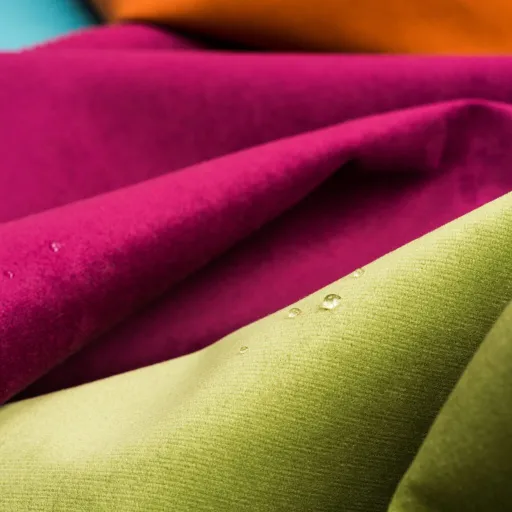
Polyester and acrylic are two synthetic fibers whose environmental effects are mainly due to their production methods and disposal problems. Plastics are derived from oil, so their production emits greenhouse gases. Also, they are not biodegradable, which means they can persist in nature for many years and are often dumped in landfills or the ocean. Microplastics are a by-product of washing these kinds of clothes. They end up in the waters, affecting marine creatures, and eventually, the plastic enters the human food chain. The impact is being lessened by measures such as recycling programs and green product development, but the fight against their environmental impact is ongoing and has not yet been won.
Production Footprint of Acrylic vs Polyester
Though acrylic and polyester are very different fabrics, they have a lot in common when it comes to the environment. They both have significant ecological footprints, mainly due to energy-consuming production processes and their dependence on non-renewable resources. Acrylic is from acrylonitrile, which is a compound processed through fossil fuel, that is, petroleum and natural gas. The smelly side of production includes toxic emissions, volatile organic compounds (VOCs), and greenhouse gas releases that contribute to air pollution and climate change. The production of polyester, which is mainly made from chemicals derived from petroleum, also generates a high-carbon footprint. Nevertheless, polyester manufacturing is a bit more energy-efficient than acrylic production. Consequently, the effect of polyester on the environment is magnified by its massive global production.
These synthetic fibers, combined, account for a considerable percentage of the textile industry’s wastewater discharge and chemical usage. Reasons for such a situation include not only the nature of the materials used but also their recycling capacities. For example, recycled polyester is an attempt to lower its footprint, whereas acrylic has no scalable solution as yet. The two materials highlight that the industry must inevitably shift towards more sustainable practices, increase the adoption of eco-friendly alternatives, and implement stricter regulations to alleviate their environmental impacts.
Sustainability Trends in Acrylic and Polyester Production
In the latest data, a trend of consumers looking for more eco-friendly textiles is acknowledged, fueling innovation in the sector. The recent breakthroughs include the creation of bio-based polyester, derived from renewable plant sources, and ongoing research into biodegradable acrylics as an alternative. The main goal of the whole process is to switch from fossil fuels to renewable sources and to keep the earth unspoiled for a shorter period. Moreover, the use of recycling plants with a closed-loop system is gaining popularity, particularly with polyester, where materials can be processed and reprocessed many times, thus reducing the amount of waste produced. More stringent regulations and certifications like the Global Recycled Standard (GRS) are fostering transparency and responsibility, pushing manufacturers towards a greener way of producing goods.
Consumer Considerations
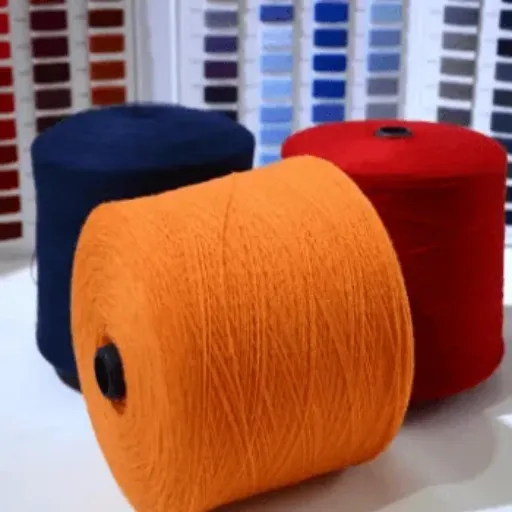
When it comes to polyester and acrylic, consumers need to think about sustainability and usage over the long term. Polyester is a practical choice for many purposes because it is durable, light, and wrinkle-resistant. However, it is made from petroleum and contributes to the microplastic problem. Even though acrylic is soft and warm, it still poses the same environmental issues because of its non-biodegradable character and dependence on fossil fuels. To make eco-friendly choices, choose clothing made from recycled polyester or sustainably sourced acrylic alternatives. Moreover, placing synthetic fabrics in microplastic-filtering bags during washing can help lessen their environmental impact.
Choosing the Right Material: Acrylic vs Polyester
The decision boils down to your preferences when you compare acrylic and polyester. The current trend and views suggest that polyester is primarily regarded as a material with the broadest application and the best traits, such as durability and soil resistance. Consequently, it is mainly used in activewear, outdoor gear, and home textiles. Acrylonitrile is used, on the other hand, for its smooth, soft, and warm character, mainly for knitwear and other garments with a close fit. Still, both fibers are synthetic, which means they pose a common environmental threat because they are derived from fossil fuels.
Besides being the most widely used synthetic fiber, polyester is recyclable, making it the most eco-friendly option and even reducing the demand for producing new resources. In contrast, acrylic fibers are not very popular for recycling, yet they cause significant pollution by shedding microplastics into the environment. Thus, if your priorities are practical durability and eco-friendliness, then recycled polyester is the best option. It is always important to consider the exact use, the longevity requirement, and the ecological footprint when choosing one of these two man-made fibers.
Budget and Longevity: Weighing Costs of Acrylic and Polyester
In terms of budget and durability, I take polyester as the more cost-effective choice in the long run. Though acrylic might initially seem cheaper, its tendency to pill and wear out more quickly means it usually needs to be replaced sooner. Polyester, mainly when produced from recycled feedstock, is more durable and provides better value over time, making it the wiser choice for most applications.
Reference Sources
Here are five professional and authoritative reference sources that you may cite to ensure the correctness of your article regarding acrylic and polyester:
- Thermolysis of Artificial Polymer Stones. Part 1. Polyester
This research paper investigates the heat resistance of acrylic and polyester, thus delivering their thermal properties. - Acrylic Paints with Alkyd Polyester
A thorough paper from the University of North Texas Library investigates the fusion of polyester and acrylic in painting techniques and reveals their distinct properties. - Understand Your Fibers | Textiles
A very informative source from the University of Georgia Extension that thoroughly discusses acrylic and polyester fibers, including their features and applications. - Mid-infrared Emissivity of Nylon, Cotton, Acrylic, and Polyester Fabrics
A study examining the emissivity and moisture absorption characteristics of acrylic and polyester fabrics. - Synthetic Fibres: Nylon, Polyester, Acrylic, Polyolefin
A detailed book available in the UC Davis Library examines the growth and characteristics of synthetic fibers, including polyester and acrylic.
Frequently Asked Questions (FAQs)
What are the main differences between acrylic and polyester?
Acrylic and polyester are both synthetic fibers but differ in their properties. Polyester is known for its durability and moisture-wicking abilities, making it ideal for outdoor use. Acrylic, on the other hand, is softer and provides warmth, making it a popular choice for apparel. When choosing between acrylic vs polyester yarn, consider the desired softness and warmth versus durability.
Is acrylic or polyester better for clothing?
The choice of material to wear depends on individual needs and preferences. Acrylic is often softer and provides more warmth, making it comfortable for colder weather. Polyester, however, is generally more durable and resistant to wrinkles, making it suitable for everyday wear and easy to care for.
What are the advantages of using acrylic?
Acrylic has several advantages, including its softness, warmth, and affordability. It is also hypoallergenic, which may be beneficial for those with sensitive skin. Additionally, acrylic yarn is easy to care for, as it is washable and retains its shape well.
Can I use acrylic and polyester together?
Yes, acrylic and polyester can be blended to take advantage of the properties of both fibers. This combination can create a yarn made from both materials, offering enhanced durability and softness. Blended yarns are often used in various apparel and home textiles for a balance of comfort and strength.
How does the softness of acrylic compare to polyester?
Acrylic is considered softer to the touch compared to polyester. While polyester can be smooth, it may not provide the same level of softness and warmth that acrylic does. Therefore, if softness is a priority, acrylic may be the preferred choice.
What types of clothing are best made from polyester?
Polyester is often used in activewear, outdoor gear, and casual clothing due to its durability and moisture management properties. It is resistant to wrinkles, making it a popular choice for travel apparel. Additionally, polyester blends well with other fibers, enhancing the performance of the fabric.
Is acrylic yarn suitable for outdoor use?
Acrylic yarn is not typically recommended for outdoor use due to its lower durability compared to polyester. However, it can be used for lightweight outdoor garments in cooler climates where warmth is desired. For optimal performance in outdoor environments, polyester or a blend of the two is often preferred.
What should I consider when choosing between acrylic and polyester yarn?
When choosing between acrylic and polyester yarn, consider factors such as the intended use, desired texture, and care requirements. If you prioritize warmth and softness, acrylic may be the better option. Conversely, if you need durability and ease of care, polyester or a polyester blend might be the best choice.













